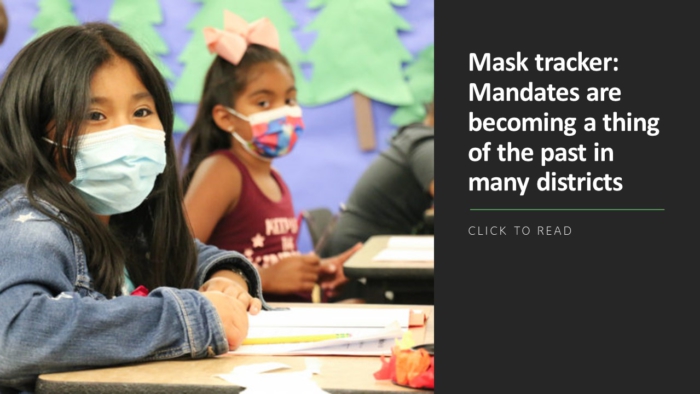To continue to lead staff effectively as the pandemic continues, special education directors may want to take cues from strong leaders in other industries.
Larry W. Brunson Jr., an educational consultant and executive director of Brunson Educational Consulting Group in Corona, Calif., suggests following the guidance of Robert Sutton and Hayagreeva “Huggy” Rao, who are organizational behavior professors at Stanford University.
They have worked with Jet Blue, Netflix, and Home Depot. Their seven hallmarks for good leadership during a pandemic may help special education directors retain staff and reduce compliance missteps, Brunson said.
“If you’re already a leader who has proven to be compassionate and caring during this time, staff are going to be more forgiving and really admire and respect that,” he said. “We’re all going to make mistakes along the way because this is something none of us has had to deal with before.”
More from DA: Use concise language to navigate compensatory education requests
Review Brunson’s interpretations of the seven hallmarks and suggestions for how to ensure you’re being a good leader in your district:
1. Don’t pass the buck. Special education directors are the name and face of their departments, so they have to take responsibility for their decisions, Brunson said. Recognize when it is advisable not to delegate.
“Sometimes if you make certain decisions, they may come with 50 million questions attached to them,” he said. “A leader should be ready to answer questions and understand that staff may ask questions not necessarily to question their authority as a leader, but because that’s how they process information.” Get to know your team members and understand what their needs are, Brunson said.
2. Show compassion. Show compassion for your staff, but maintain a professional relationship, Brunson said. “I think where some directors may go wrong is they want their team to tell them everything and that’s not appropriate,” he said. If a staff member is struggling, recognize a little empathy goes a long way, Brunson said.
3. Offer as much predictability as possible. Create stability for staff, Brunson said. Offer them clear expectations.
For example, continue to meet together on a specific day every week so they have something to expect and know they have your support as their leader. Have an agenda and always afford them time ahead of the meeting to contribute to it and share what problems with students or colleagues they may need help solving.
Just ensure they don’t judge each other’s decisions during the meeting. “Staff have to feel safe doing it,” he said. If you or your staff have advice for each other, remember to use the phrase, “I recommend,” rather than, “You should,” Brunson said. “It is more supportive and safe,” he said.
4. Watch your “tells.” Recognize that staff members who know you well are going to be able to tell when something is amiss and worry that something is wrong that may affect them, Brunson said. For example, Brunson dresses up every day. If he is not dressed up, his colleagues may think something is wrong.
“I have to be aware of that,” he said. Other directors may avoid eye contact, bite their fingernails, or exhibit some other quirk that may inadvertently prompt staff to worry, so they have to be aware of their behavior during interactions. “Watch your quirks because you may send a message you don’t want to send,” he said.
5. Create community from afar. Organize virtual activities to do as a team to stay connected, Brunson said. You may want to engage in virtual yoga or play virtual games, such as trivia.
More from DA: What to consider when drafting individualized contingency plans
“Laughing and having some stress-free time are important to do to strengthen the community,” he said. Even if it’s just once a month, Brunson said, it’s a way to connect and catch up in a more relaxed way.
6. Build psychological safety. Offer your staff members psychological safety so they are able to ask for help with personal issues without feeling like their job is threatened, Brunson said. This is particularly important in light of the effect the pandemic has had on staff mental health.
“It’s appropriate for leaders to let their teams know that if they need to talk with someone or vent to someone, they have employee assistance programs available,” he said.
7. Look for opportunities. You may have some downtime because you’re not receiving as many phone calls and drop-ins as you were before the pandemic, Brunson said.
Take this time to look over your systems and structures. Analyze data. Look at whether you are truly educating students in their least restrictive environment. Or look at the value of the professional development that is available for staff. Or look at whether you can operate your department more efficiently.
“Try to take as much time as you can to look at your systems and structures and use your time wisely,” he said. “Truly see what you can do to make things better in your department.”
Consider setting up a weekly innovation meeting with staff to discuss improving on and developing new systems, Brunson said.
Brunson is speaking about this topic during the pre-symposium, “Lessons in Leadership: Everything You Need to Successfully Maneuver Through the Challenges of Your New Role in a Post-COVID-19 Environment,” during LRP’s National Institute, April 19-21.
Cara Nissman covers autism, school psychology, and IEP team issues for LRP Publications.



